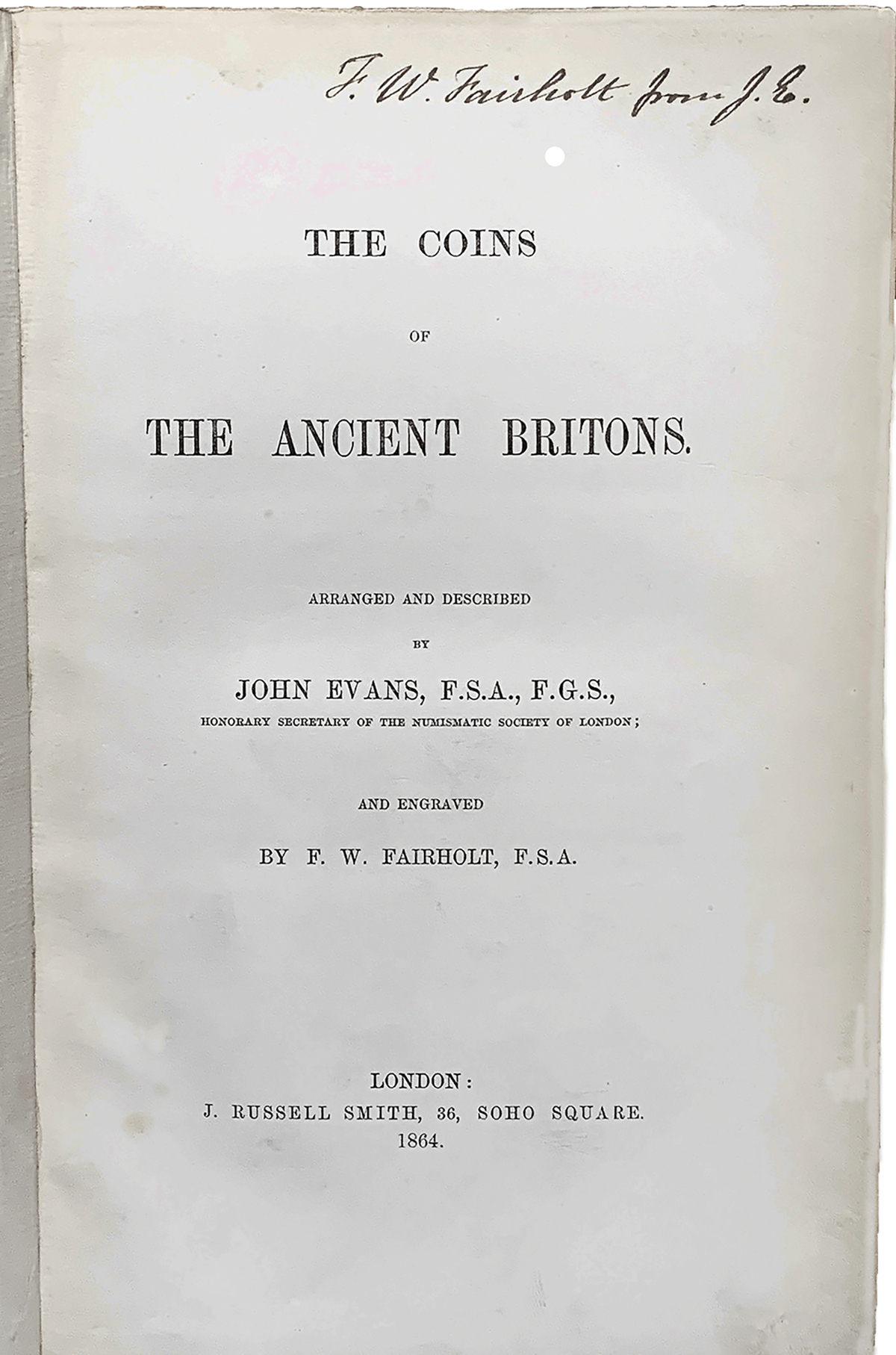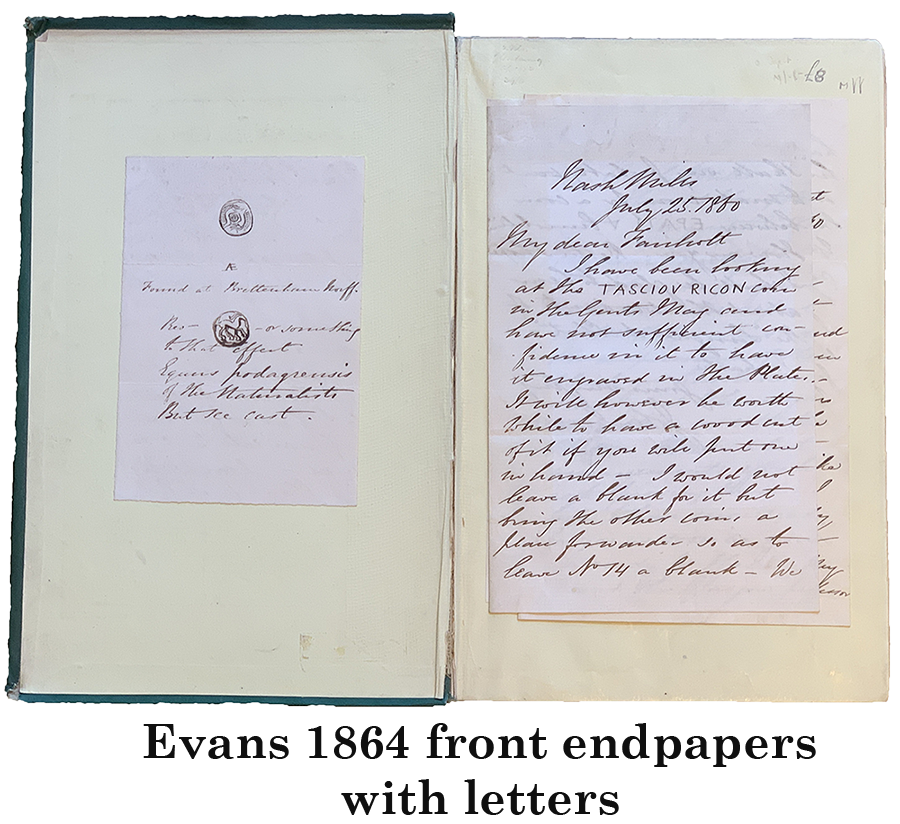
Numismatic Articles
Van Arsdell 2020c (Info)
Letters to Fairholt
By Robert Van Arsdell
Introduction
Recently, F. W. Fairholt's copy of Sir John Evans' 1864 Coins of the Ancient Britons surfaced in the inventory of an antiquarian bookseller in Detroit, Michigan. The book was a presentation copy from Evans to Fairholt with an inscription initialed by Evans on the title page. (Info) Fairholt provided all the woodcuts for the book and worked closely with Evans to do the work.
Fairholt appears to have pasted a note from Evans with a coin sketch and findspot details on the front pastedown. On the first side of the first free endpaper, he tipped-in a four-page letter from Evans dated 1860, and onto that another two-page letter from the same year.
These additions give some idea of the working relationship between Evans and Fairholt. Evans mentions the difficulty of obtaining images of coins. This caused delays in completing the work. Fairholt had to cut the images into wood, so every image had to be secured before a plate could be cut. There was no possibility of inserting a coin after the cutting was done. If the images spilled over onto the next plate, delays in cutting that plate would occur. One can see Evans instructing Fairholt to cut parts of a plate, but then to stop and see if a promised image was forthcoming. It was a far cry from today's electronic methods in which images can easily be moved around, inserted and sized to fit a space.
The letters also give some appreciation for the friendship between Evans and Fairholt, with Evans inquiring about Fairholt's health and giving advice about medicines and cures. (Info) Fairholt would succumb to tuberculosis in 1866. He did not make any annotations in the book Evans gave him.
Evans' correspondence with Fairholt – note on pastedown (Info)
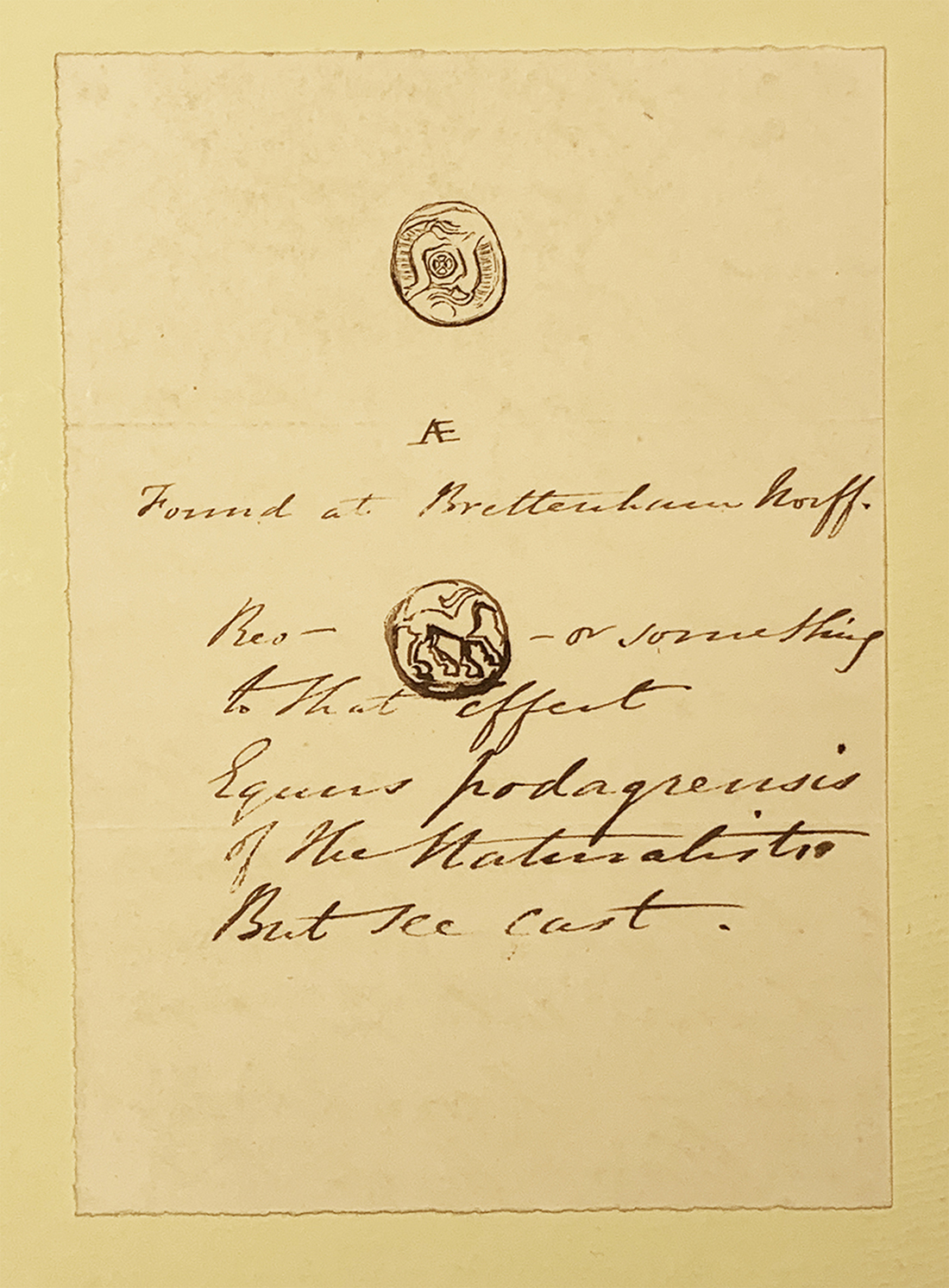
Transcription:
(sketch of obverse)
Æ (AE ligatured)
Found at Brettenham Norff.
Rev – (sketch of reverse) – or something to that effect
Equus podagrensis (?) of the Maternalists (?).
But see cast.
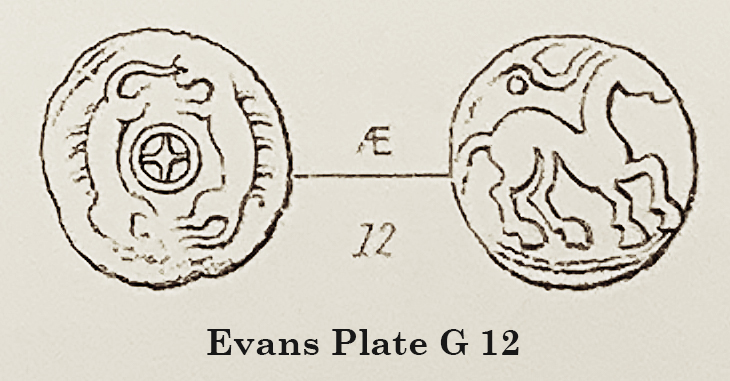
The bronze coin sketched by Evans in the note appears on Fairholt's plate G as number 12. It was deleted from Mack's 1953 catalogue and subsequent writers have not firmly restored it to the British series. Symonds 1990b lists another example (number 5 in the 1990 article), but is uncertain whether it's British or Gaulish. Hobbs 1996 includes it as number 402 on plate 17 as "Early Uninscribed Bronze" but without further speculation about its likely origin. The type needs further research.
First Letter
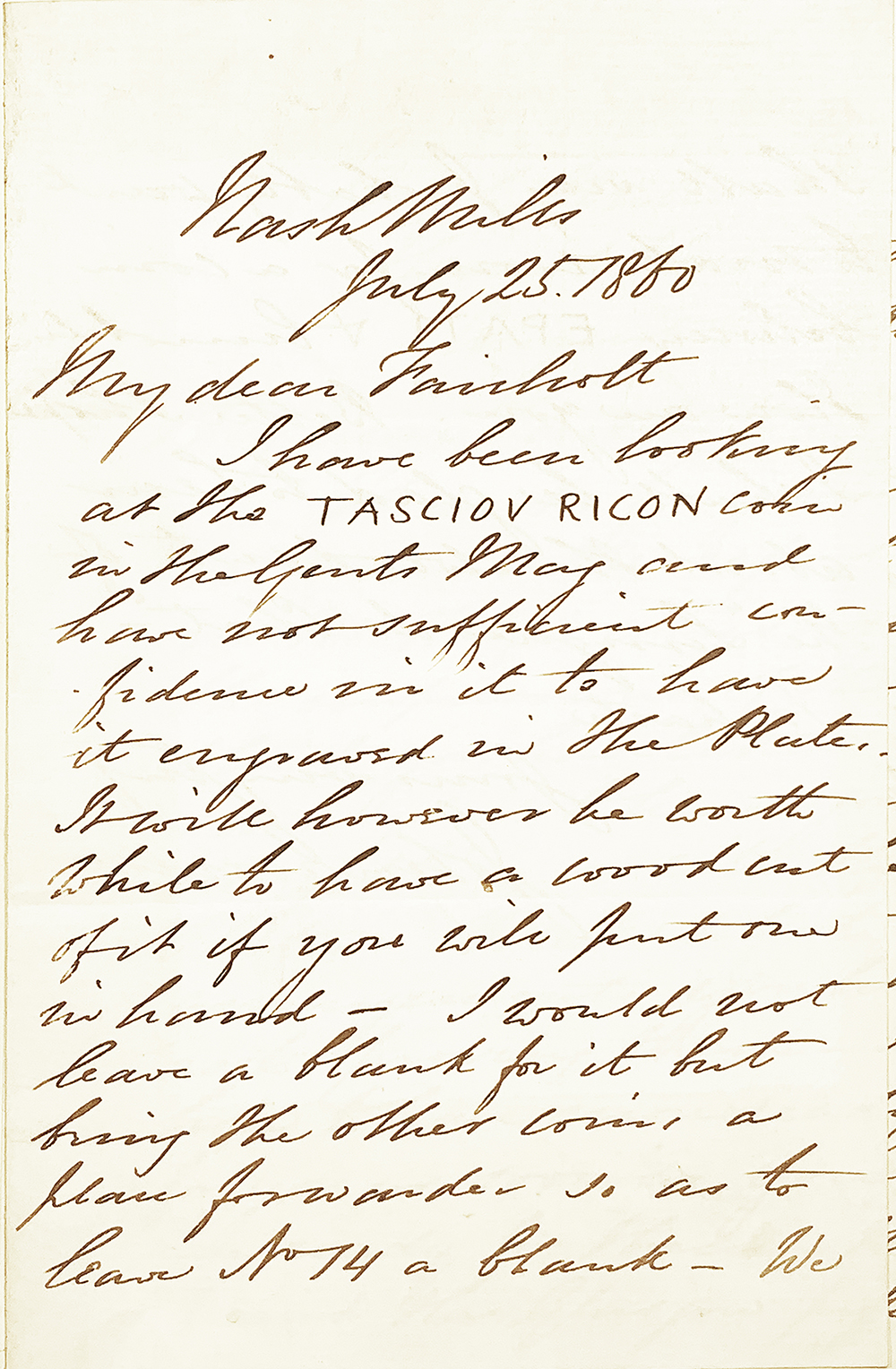
Transcription:
Nash Mills
July 25. 1860
My dear Fairholt
I have been looking at the TASCIOV RICON coin in the Gents Mag and have not sufficient confidence in it to have it engraved in the Plate. It will however be worth while to have a wood cut of it if you will put (?) one in hand – I would not leave a blank for it but bring the other coins a place forwarder so as to leave No 14 a blank - We
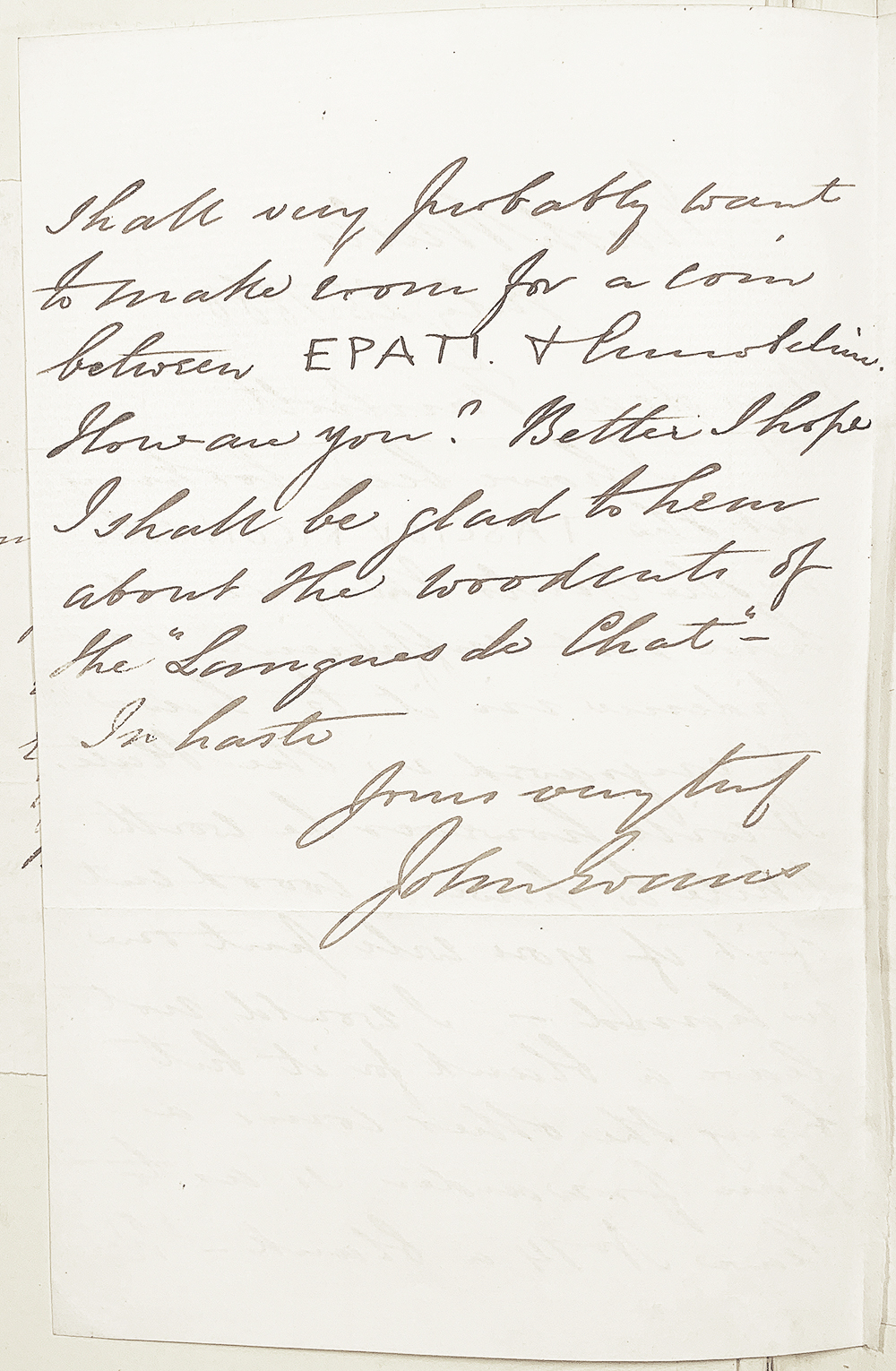
shall very probably want to make room for a coin between EPATI & Cunobeline.
How are you? Better I hope
I shall be glad to hear about the woodcuts of the "Langues du Chat" – In haste
Yours very truly,
John Evans
There was some uncertainty about the TASCIOV RICON coin's inscription. The Gentleman's Magazine published it as TASCIO VRICON in two lines, but Evans believed the V should be in the upper line.
The TASCIOV RICON coin would appear in Evans' plate VIII as number 8. He determined the correct reading of the inscription after the letter was written.
Second Letter
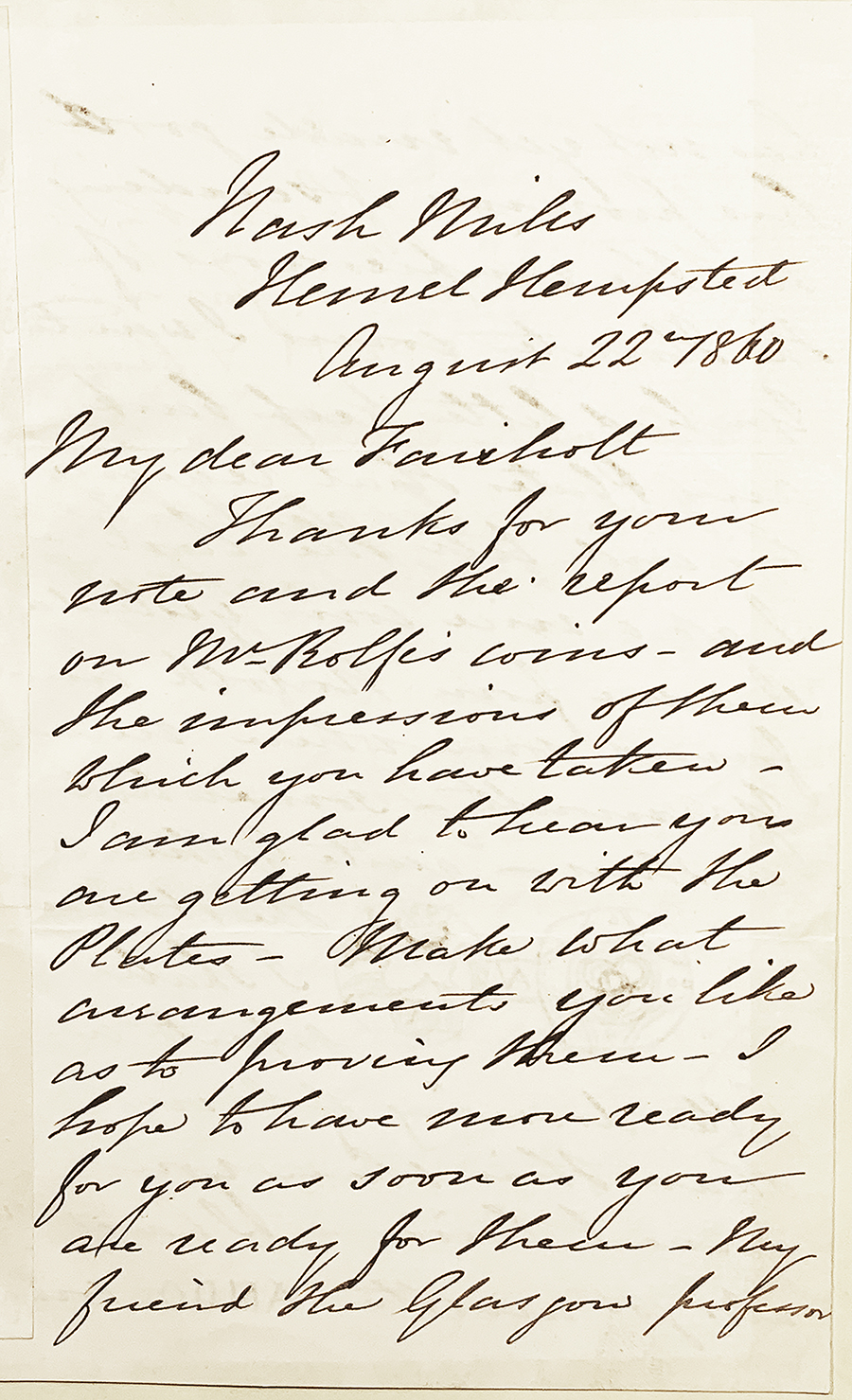
Transcription:
Nash Mills
Hemel Hempsted
August 22 1860
My dear Fairholt
Thank you for your note and the report on Mr. Rolfe's coins – and the impressions of them which you have taken - I am glad to hear you are getting on with the plates – make what arrangements you like as to proving them – I hope to have more ready for you as soon as you are ready for them – my friend the Glasgow professor
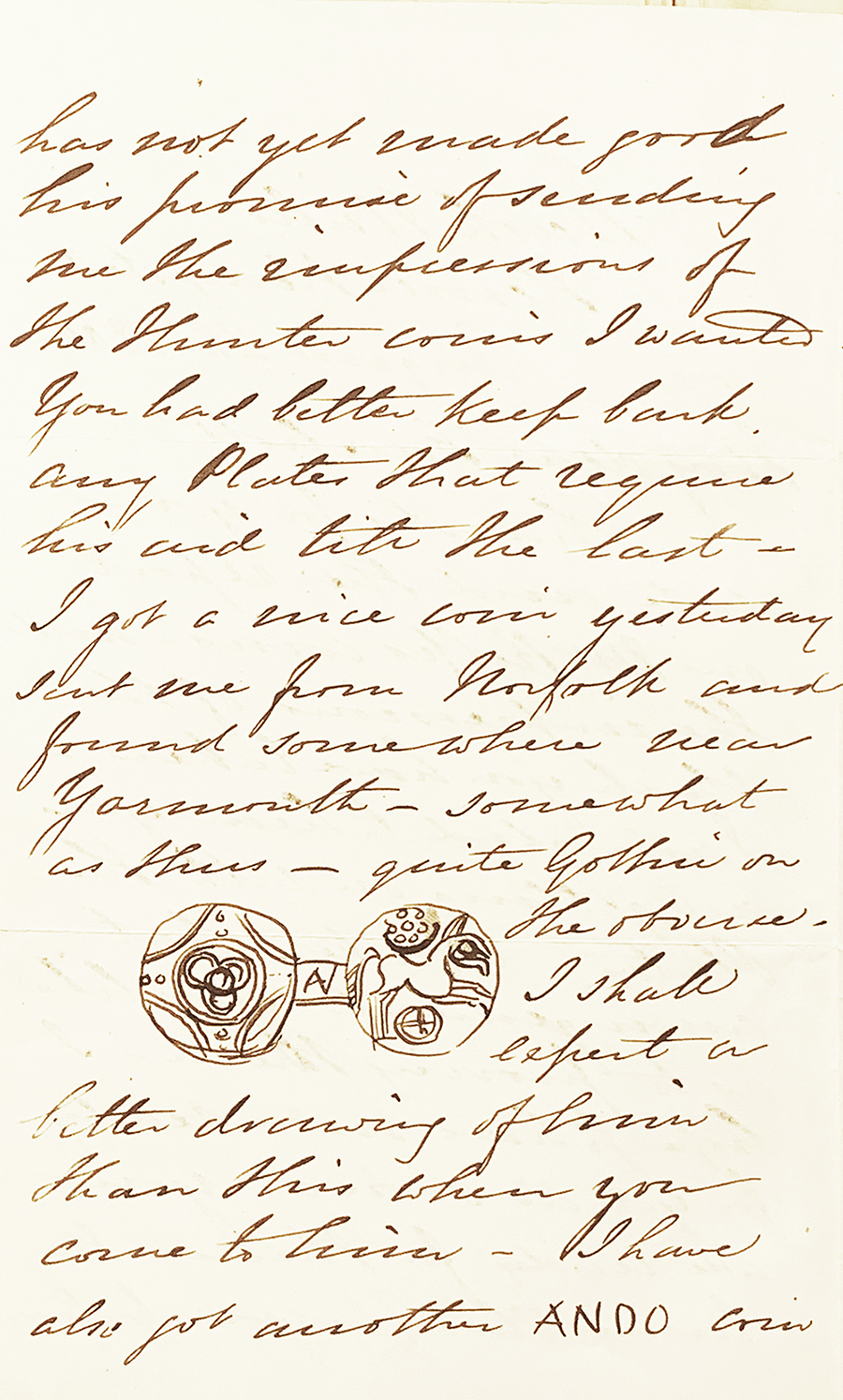
has not made good his promise of sending me the impressions of the Hunter coins I wanted. You had better keep back any Plates that require his and lith the last – I got a nice coin yesterday sent me from Norfolk and found some where near Yarmouth – somewhat as this – quite Gothic on the obverse – (sketch of coin) I shall expect a better drawing of him than this when you come to him – I have also another ANDO coin
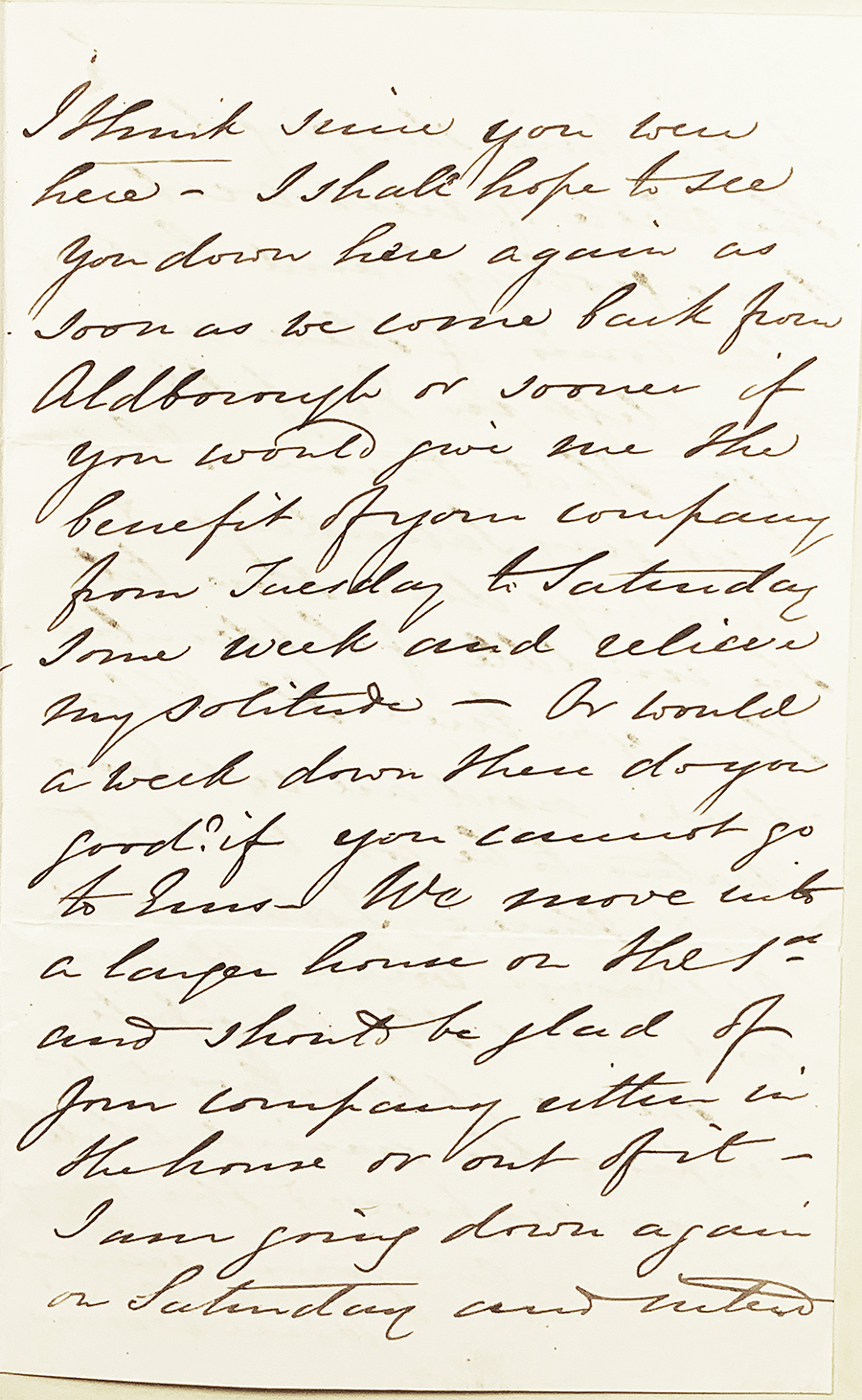
I think since you were here – I shall hope to see you down here again as soon as we come back from Aldborough or sooner if you would give me the benefit of your company from Tuesday to Saturday some week and relieve me my solitude – or would a week down here do you good? If you cannot go to Lim (?) – We move into a larger house on the 1st and I should be glad of your company either in the house or out of it – I am going down again on Saturday and intend
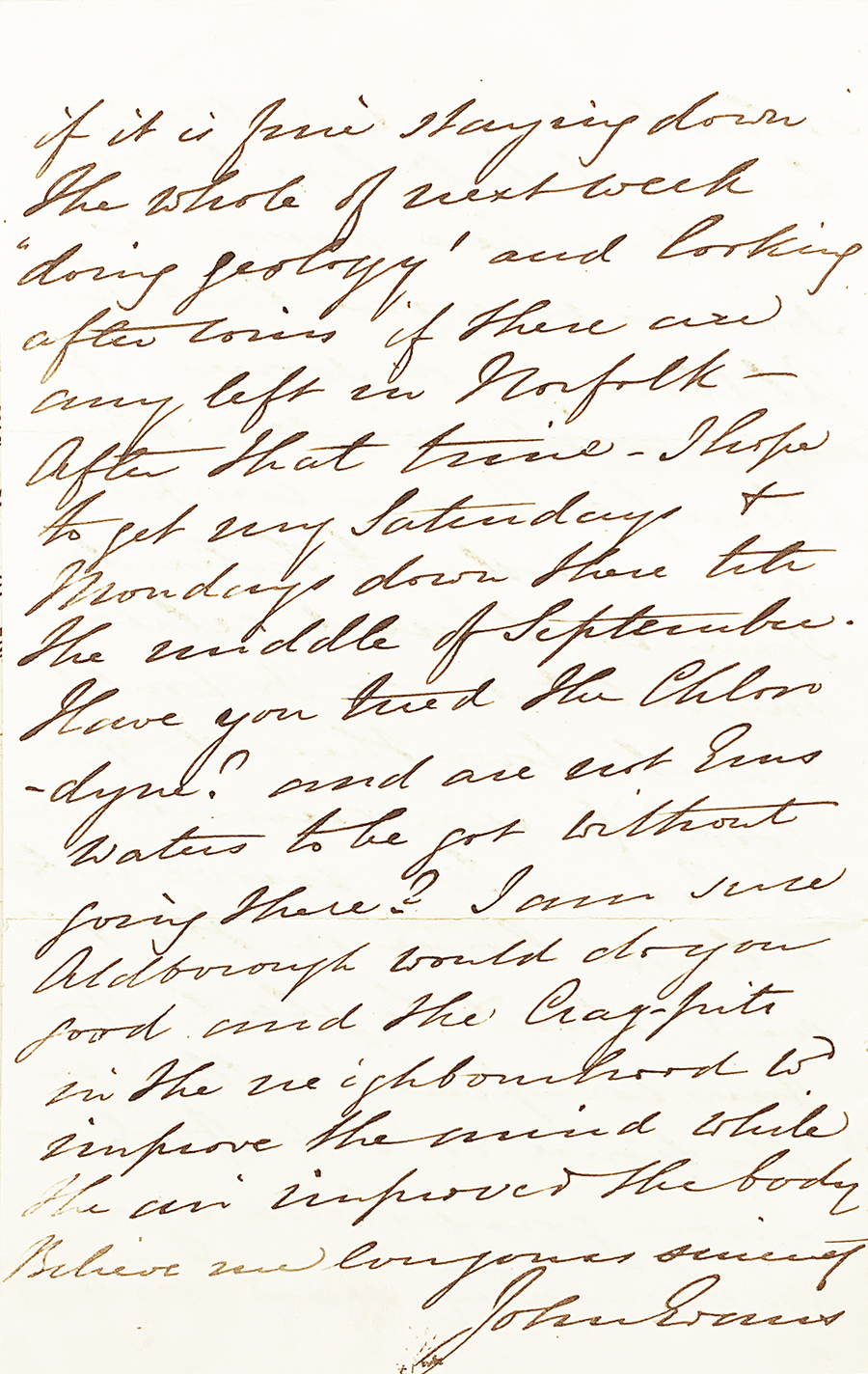
if it is fine staying down the whole next week "doing geology" and looking after coins if there are any left in Norfolk – after that time (?) – I hope to get my Saturdays & Mondays down there til the middle of September.
Have you tried the Chloro-dyne? and are not Lim (?) waters to be got without going there? I am sure Aldborough would do you good and the Cray-frits (?) in the neighbourhood to improve the mind while we can improve the body believe me
Ever yours sincerely
John Evans
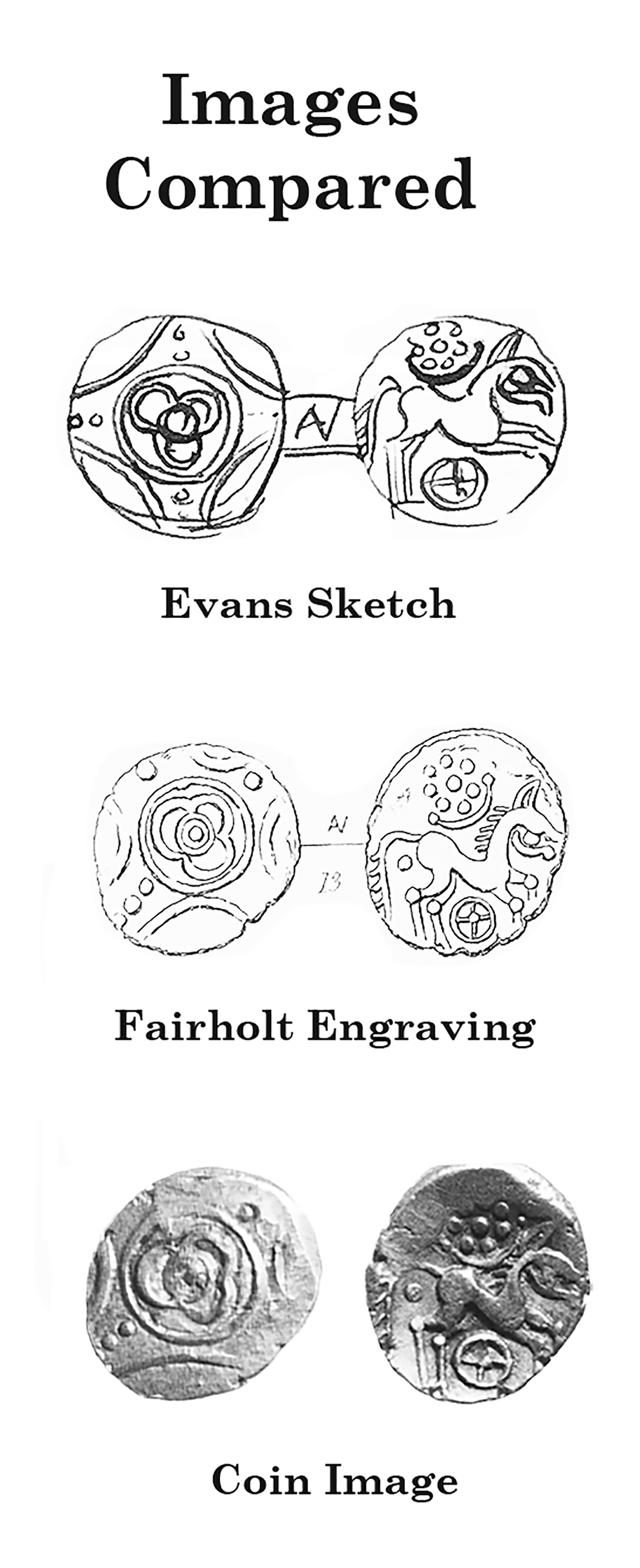
Evans included the Freckenham stater on plate XIV as number 13. The illustration shows the progression from Evans' sketch to Fairholt's woodcut, with a comparison to a photograph of the coin likely used as a model. Fairholt's craftmanship was a major contribution to the lasting value of Evans' book.
Madden's History of the Jewish Coinage
Fairholt also did the woodcuts for Madden's 1864 History of the Jewish Coinage. He must have been working on both Madden's and Evans' books simultaneously.
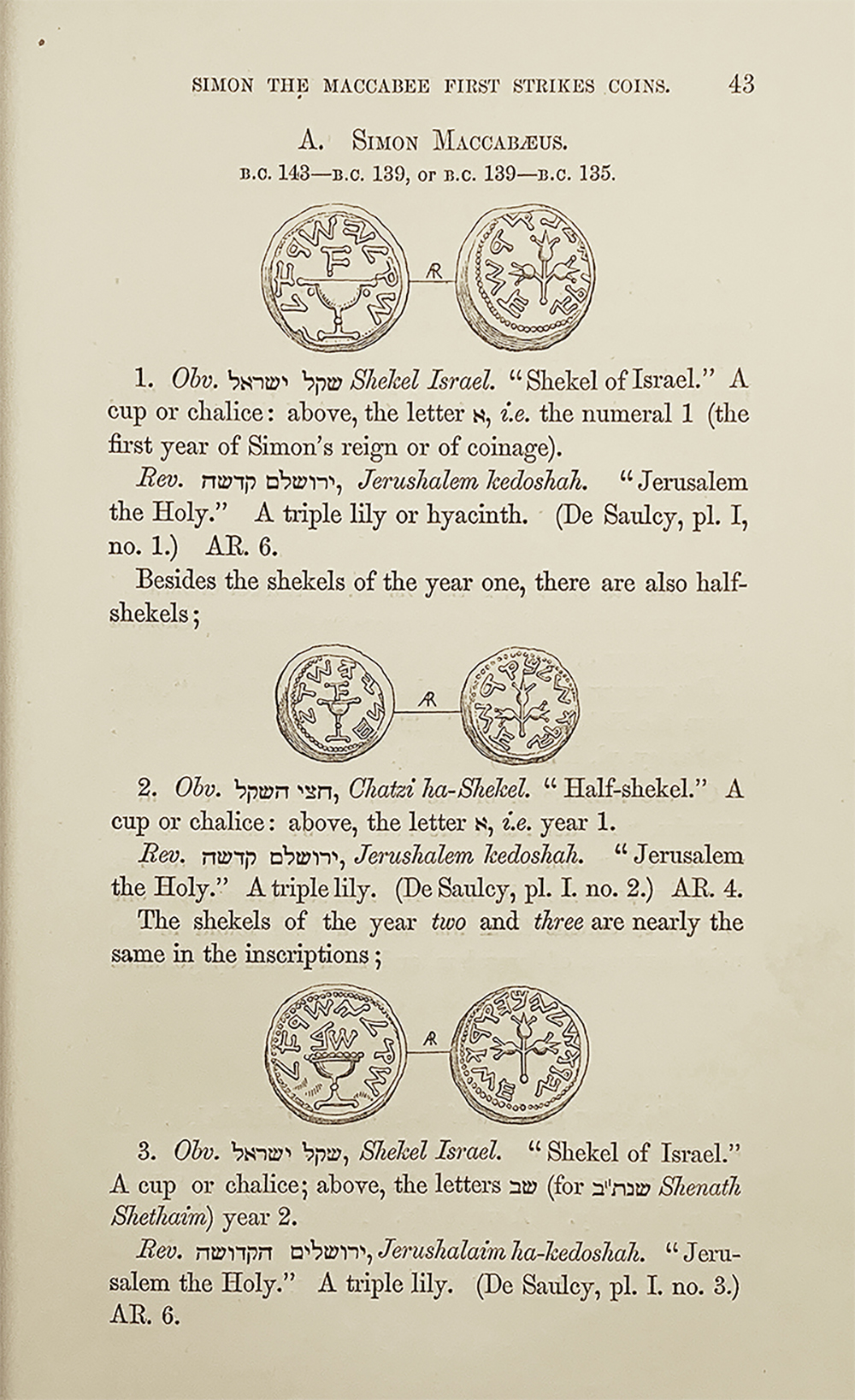
The craftmanship displayed in Evans' catalogue, however is slightly finer – suggesting Evans was the more demanding author.
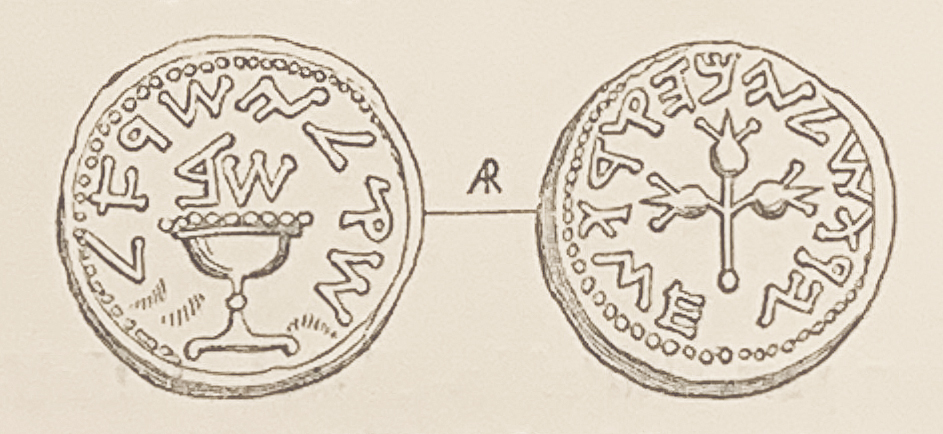
This drawing of a Year 2 Shekel, shows Fairholt's usual attention to detail, but the lines and shading are slightly heavier than the work for Evans' book.
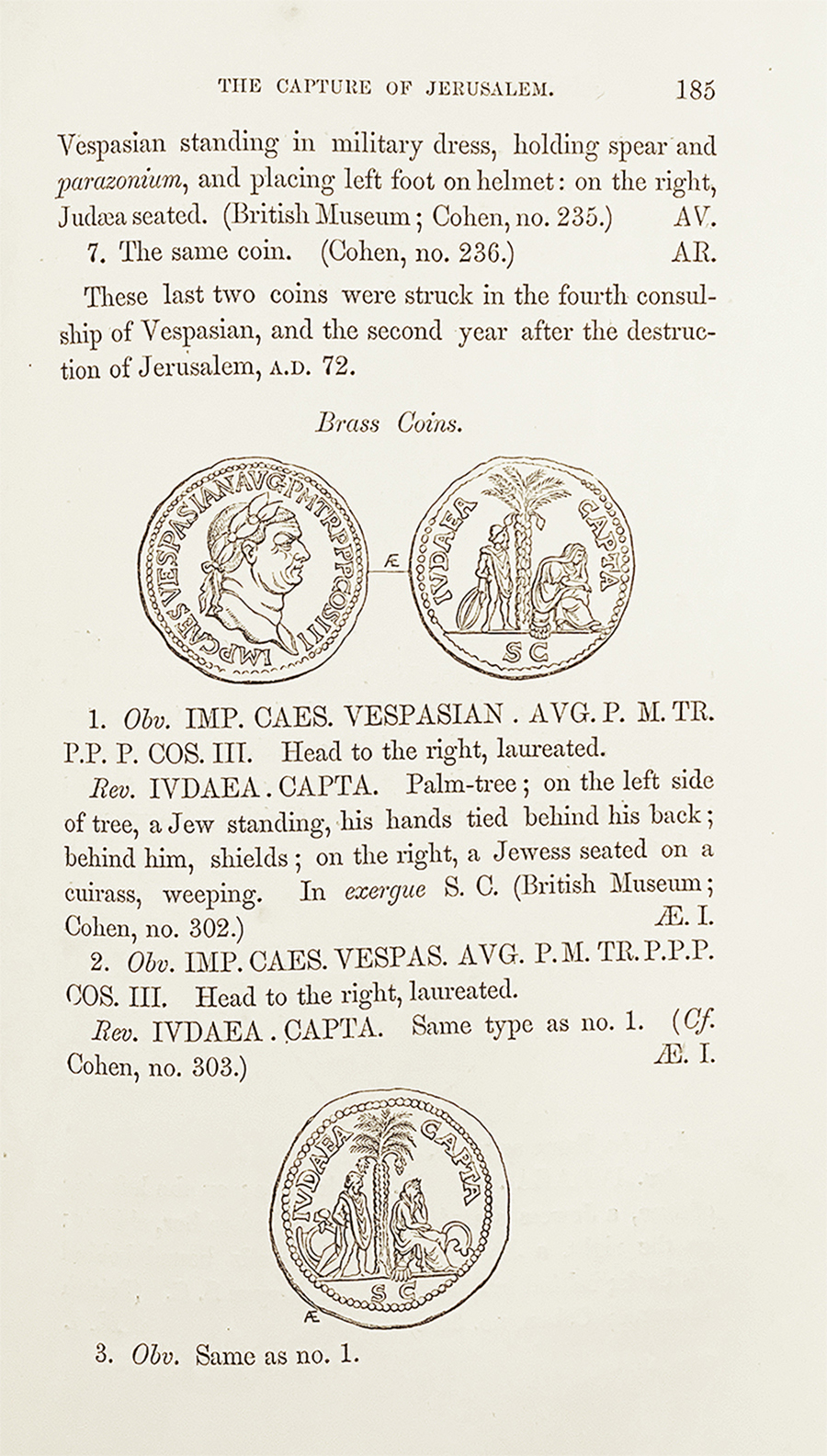
Madden avoided the problem of engraving full plates. He used inline images throughout the book, making it easier to insert them as they became available.
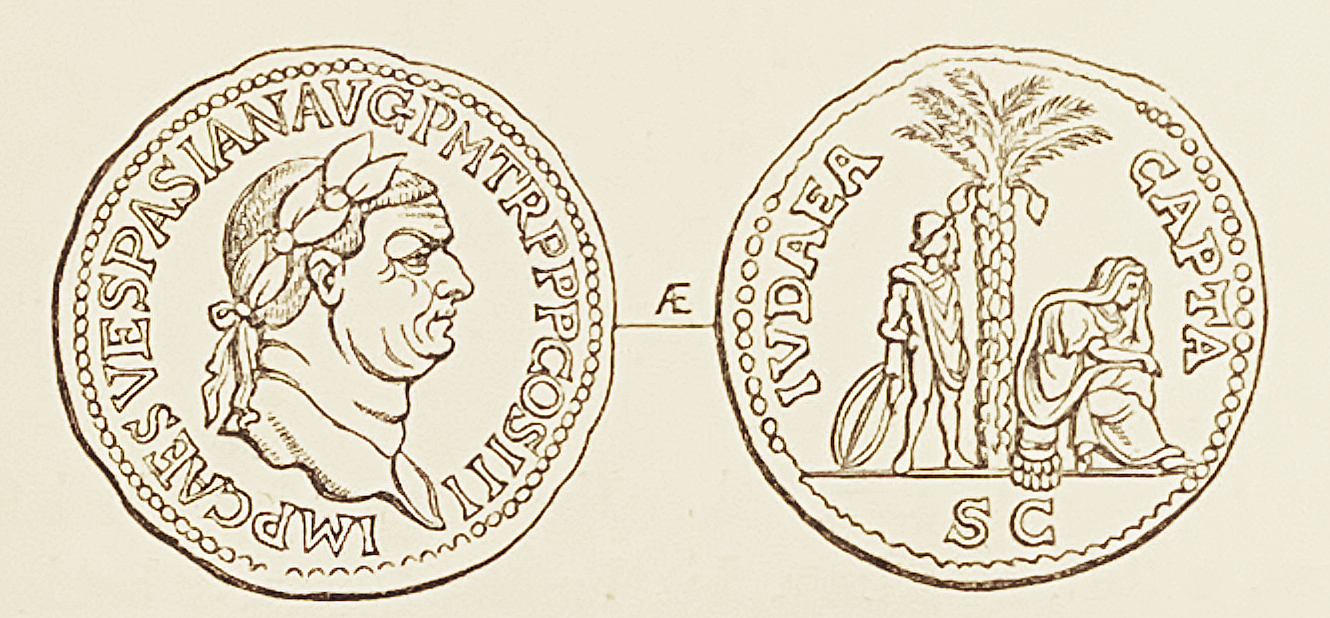
The images in Madden's book exhibit Fairholt's skill in capturing the overall impression of the original coin.
Illustrations in Charles Roach Smith excavation reports
Prior to working on numismatic books, Fairholt had established himself as a draftsman and woodcut engraver for archaeological works. In the 1840s, he worked with Charles Roach Smith on the excavation reports for Richborough, Reculver and Lymne. The published report appeared in 1850 as The Antiquities of Richborough, Reculver, and Lymne, in Kent.
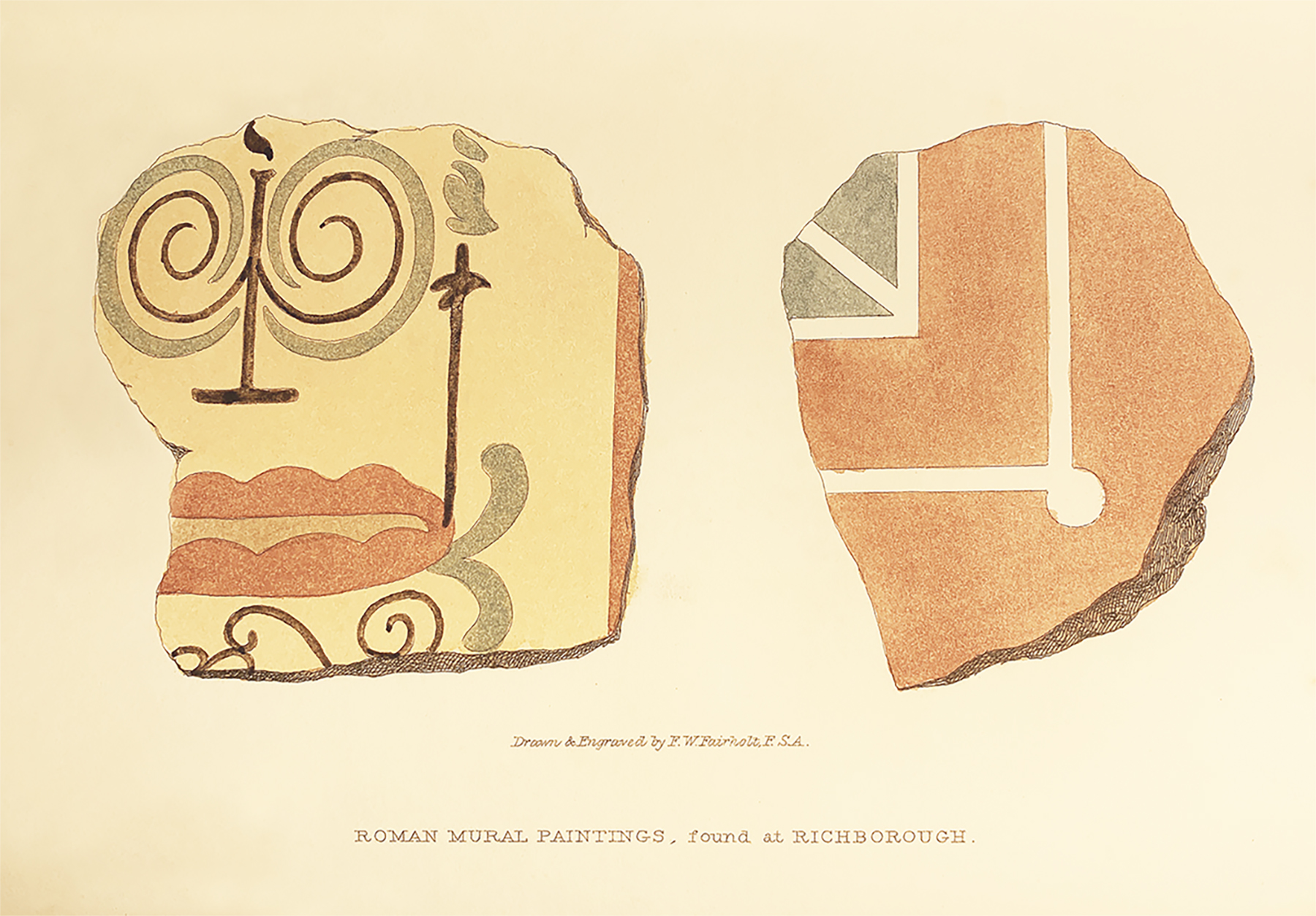
Frontispiece for the Richborough report, showing Roman wall plaster.
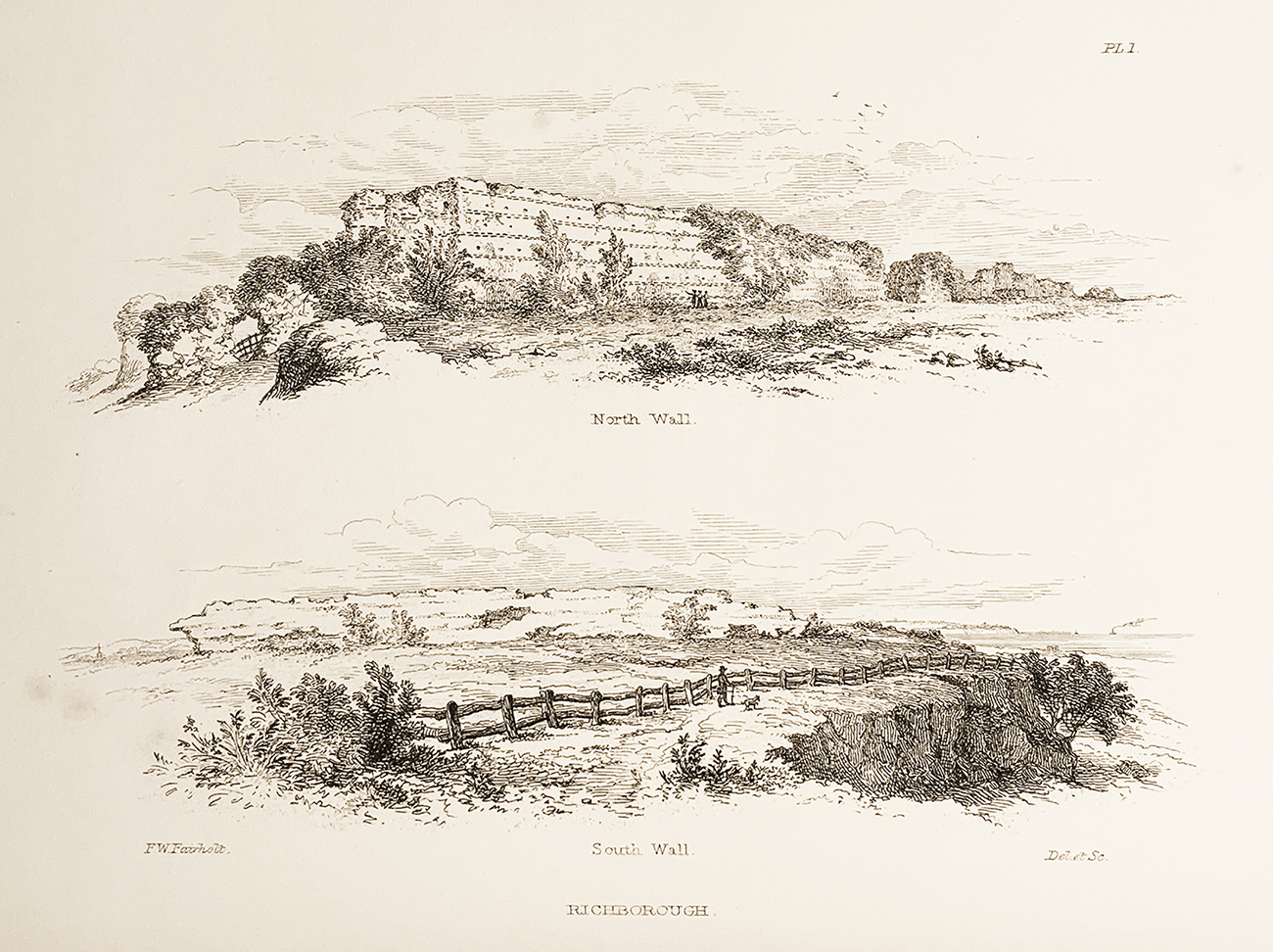
Plate 1 of the Richborough report, showing the walls of the Roman fort.
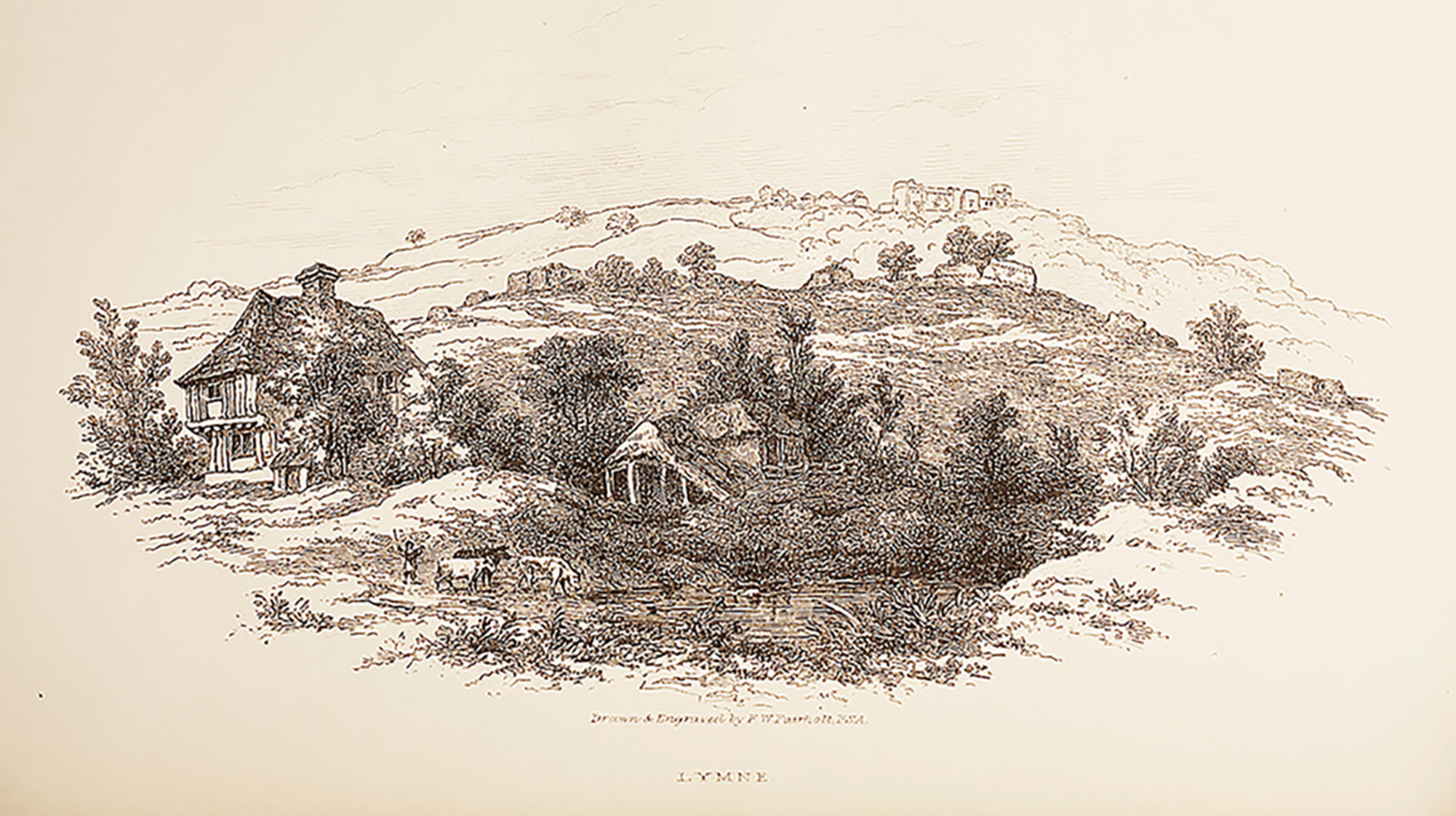
Frontispiece of the Lymne report, showing an overall view of the site.
Smith published a revised report, based on subsequent excavations at Lymne, in 1852. Several illustrators worked on the later report, including Fairholt.
Illustrations in Archaeologia
Fairholt also worked as an archaeological draftsman. In 1854, he worked at George Corner's excavations at Keston in Kent. He made an overall drawing of one of the Roman buildings, which later appeared in Corner's report in Archaeologia. (Info) The engraving work, based on Fairholt's sketch, was done by another famous engraver, James Basire III.
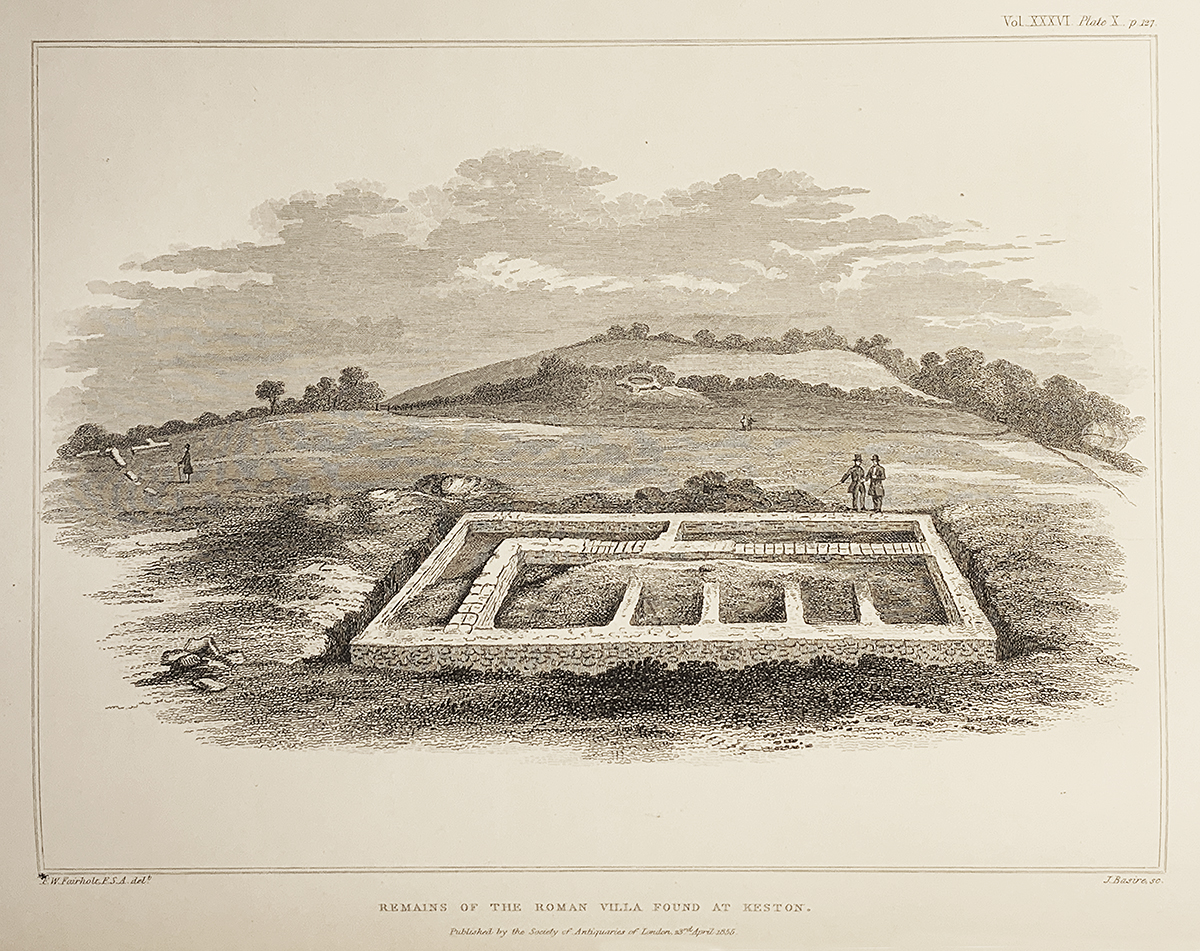
The Fairholt drawing was still useful, over a hundred years later, when the site was re-examined by Brian Philp during his 1968 excavations. The site had been extensively ploughed-out after 1855, and Fairholt's drawing enabled the excavators to have a better understanding of the building. Philp re-published Fairholt's drawing in his 1991 report. (Info)
Summary
Frederick William Fairholt was one of the greatest numismatic illustrators of the ninteenth century. His skill and craftmanship assured the lasting value of Sir John Evans' Coins of the Ancient Britons.

